What We Can Learn From Watching The Pros Race at the PTO Championships
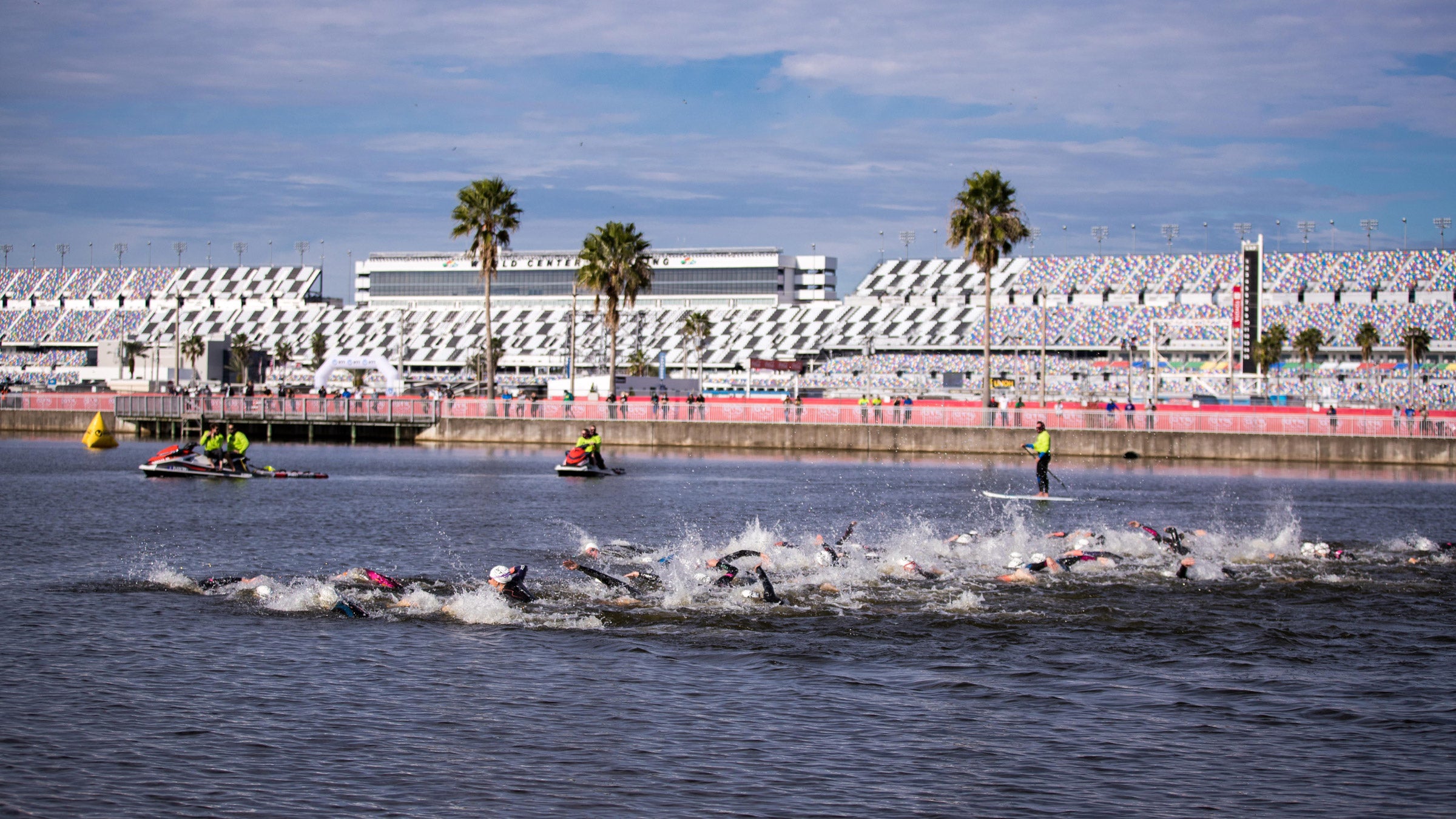
No doubt, the action from Sunday’s PTO 2020 Champs at the Daytona Speedway was an impressive display from the highest level of talent in the sport. Getting an opportunity to watch the best in the world race on the big stage is a good reminder that racing is its own beast. While not all of the pros looked perfect (how could they?), there’s a lot to glean from these speed demons as they worked to bust out the rust. While some athletes, like champs Paula Findlay of Canada and Norway’s Gustav Iden, appeared to execute their race plans to a tee, others came away with some things to consider before the next tri on the schedule.
So what can every triathlete–from newbies to elites–learn from the pros’ performances? After all, we’ll be in the same shoes at some point in 2021: Diving in for a triathlon after months away from racing. We had two top coaches weigh-in with some observations and takeaways from the day that you can put to use in 2021 and beyond.
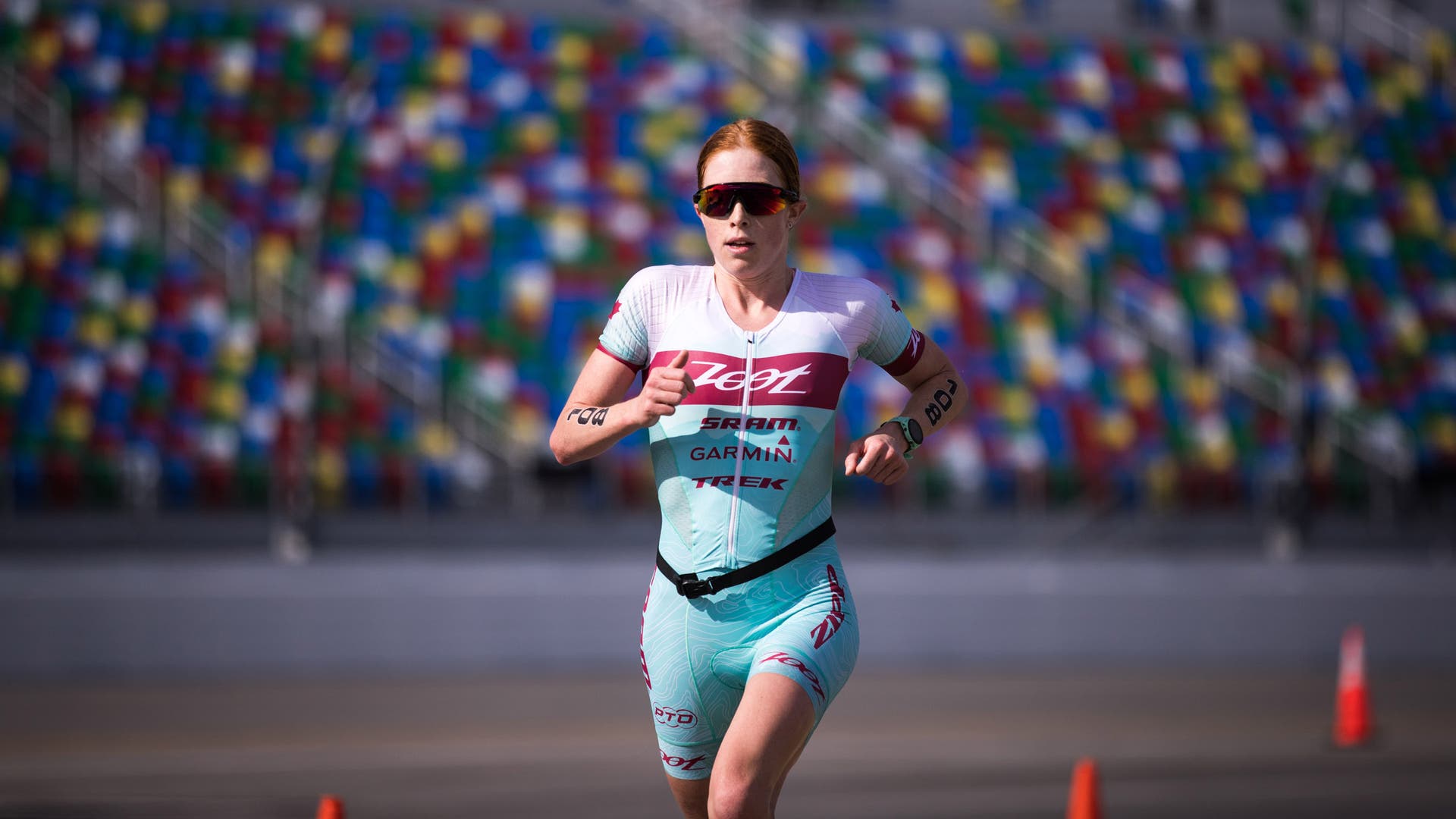
Takeaway 1: Sight right
During the swim leg, Matt Dixon, who helms elite squad Purple Patch Fitness, noticed that some pros were having trouble swimming in a straight line—a common problem he credits to lack of sighting practice. “A lot of athletes become obsessed with their pace in the pool and that’s what they focus on,” he said. “You can swim repeat 100-meters as fast as you want in the pool, but if you don’t practice sighting, you get in an open-water environment and start swimming to Egypt.”
He called out Lucy Hall, the first-out-of-the-water female pro in Daytona, as having flawless form in the swim. “She was perfect,” Dixon said of the British ITU standout. “The way she integrated sighting into the natural rhythm of her stroke allowed her to maintain that lead. Quite often, she was sighting every stroke and still swimming away from the pack.”
To become a more seamless sighter like Hall, Dixon said the key is to thinking of the rhythm as a sight-then-breathe. “It’s a small lift followed by a breath,” he said, emphasizing that you should really only lift your eyes above the water as opposed to your entire head and neck. (Check out these nine tips for better sighting.) And, above all, suggested Dixon, practice in the pool. “The closer you are to race day, the more you should add sighting to your workout, to the point where you are sighting at least three times every lap.”
Takeaway 2: Keep contact in the swim
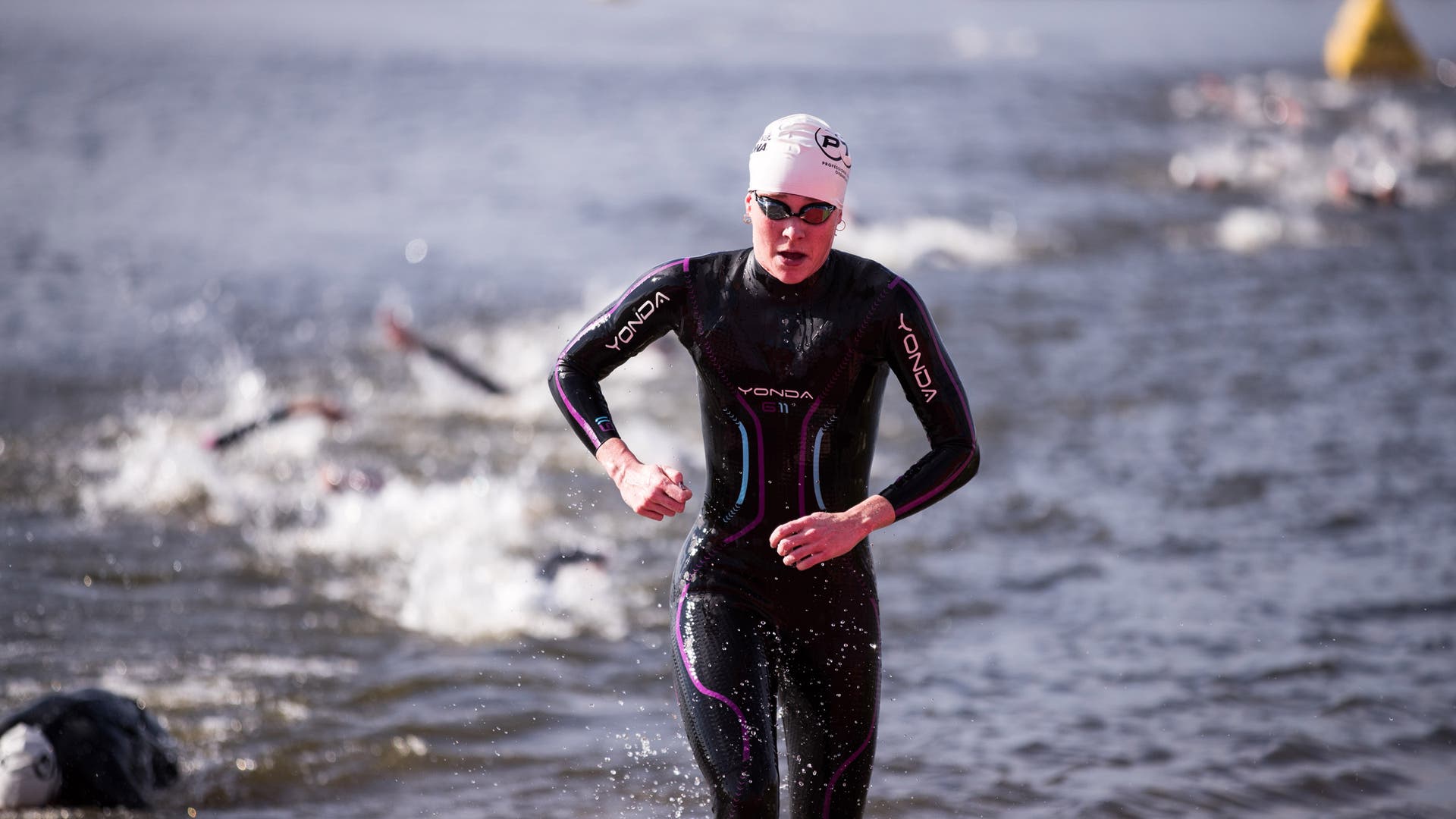
Another slip-up in the pro swim? Iffy drafting and positioning. “You could really notice it in the drone footage that many of the pros were swimming as hard as they could without paying attention to their position to another swimmer, which was to their detriment,” he said. “I saw several people dropped from their group because they didn’t move into a smarter position.”
So what’s a “smart” position in the swim, anyway? “The best place to be is tucked at the hip of another swimmer, to get the most draft with the least amount of effort,” said Dixon. “The second best place is at their feet.” (Read more about how drafting can make a big difference in your swim.)
While drafting in the water is a nuanced tactic typically employed by more experienced swimmers, Dixon emphasized the importance of simply being aware of your surroundings, and practicing staying close to other swimmers. “When we can swim with friends again, get three of you together and work on swimming at the hip or the feet of one another, making sure not to drop anyone off the group,” Dixon suggested. “That sort of ‘chain gain’ drill develops awareness and helps make the fundamentals of drafting autopilot.”
Takeaway 3: Break out of aero position
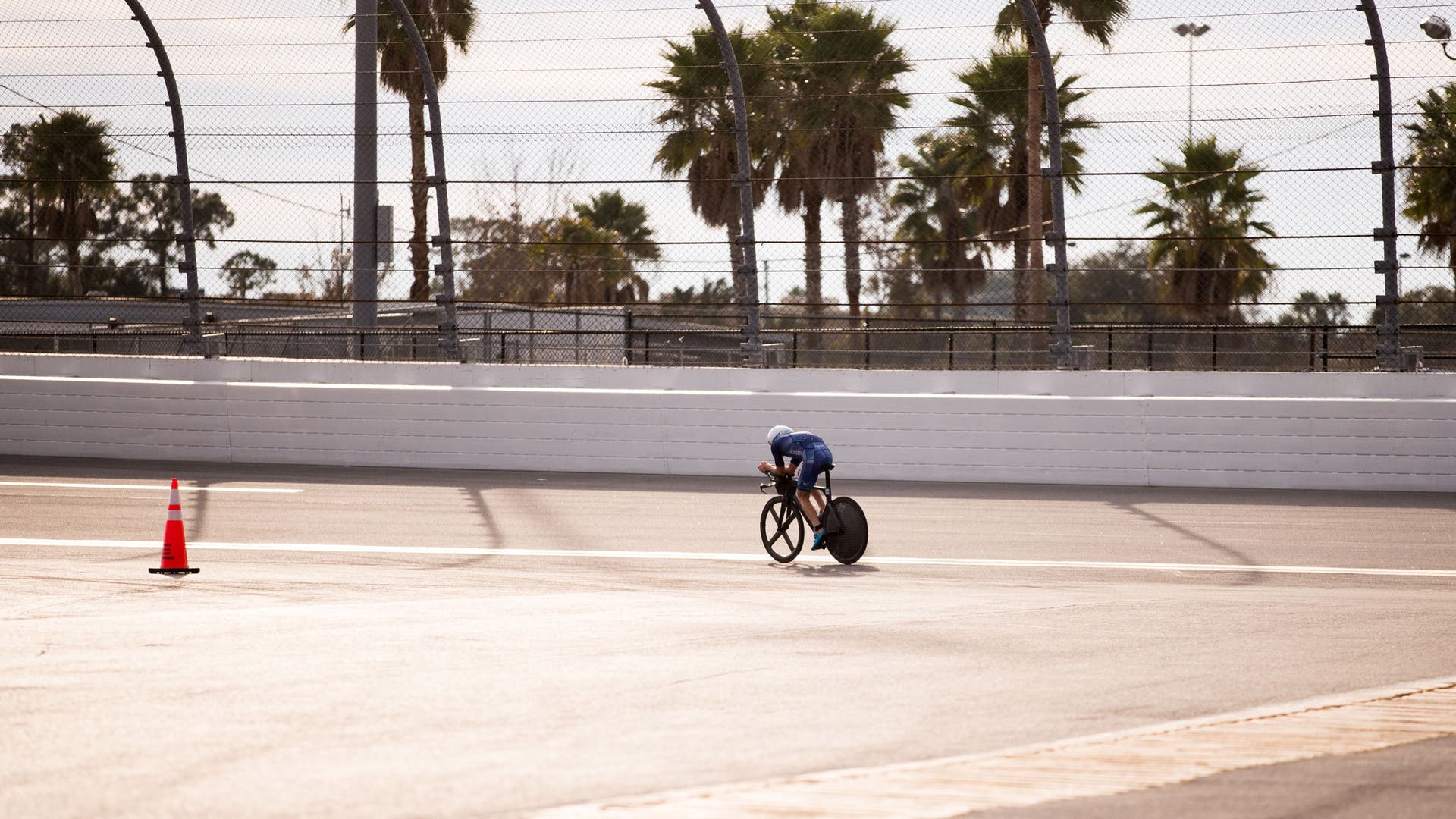
There’s really only one way to race 20 fast and flat loops around a speedway: Head down and tucked in. But, as we saw play out on Sunday, staying locked in an aero position for nearly two hours is a suboptimal set-up for a fast run.
“A course like Daytona’s has high potential to destroy many running legs,” said Jim Vance, who coaches American star Ben Kanute, who wound up in 20th place. “You are in time trial position the whole way, lying on the bars and folded over at the hips. Across the board, run times were all slightly slower than you’d anticipate, and that was due to the huge fatigue from riding at a pretty narrow range of power and a really narrow range of cadence and no change in position.”
Pros like Canada’s Cody Beals fared far better by intentionally popping out of aero position along the way. “I seized every opportunity to take a quick break from aero position, such as when another athlete passed me and I had to fall back,” said Beals, who finished 21st with a top-10 run split. “I also periodically shook out my arms and shoulders while staying as aero as possible.”
Takeaway 4: Resist the temptation to burn too many matches on the bike
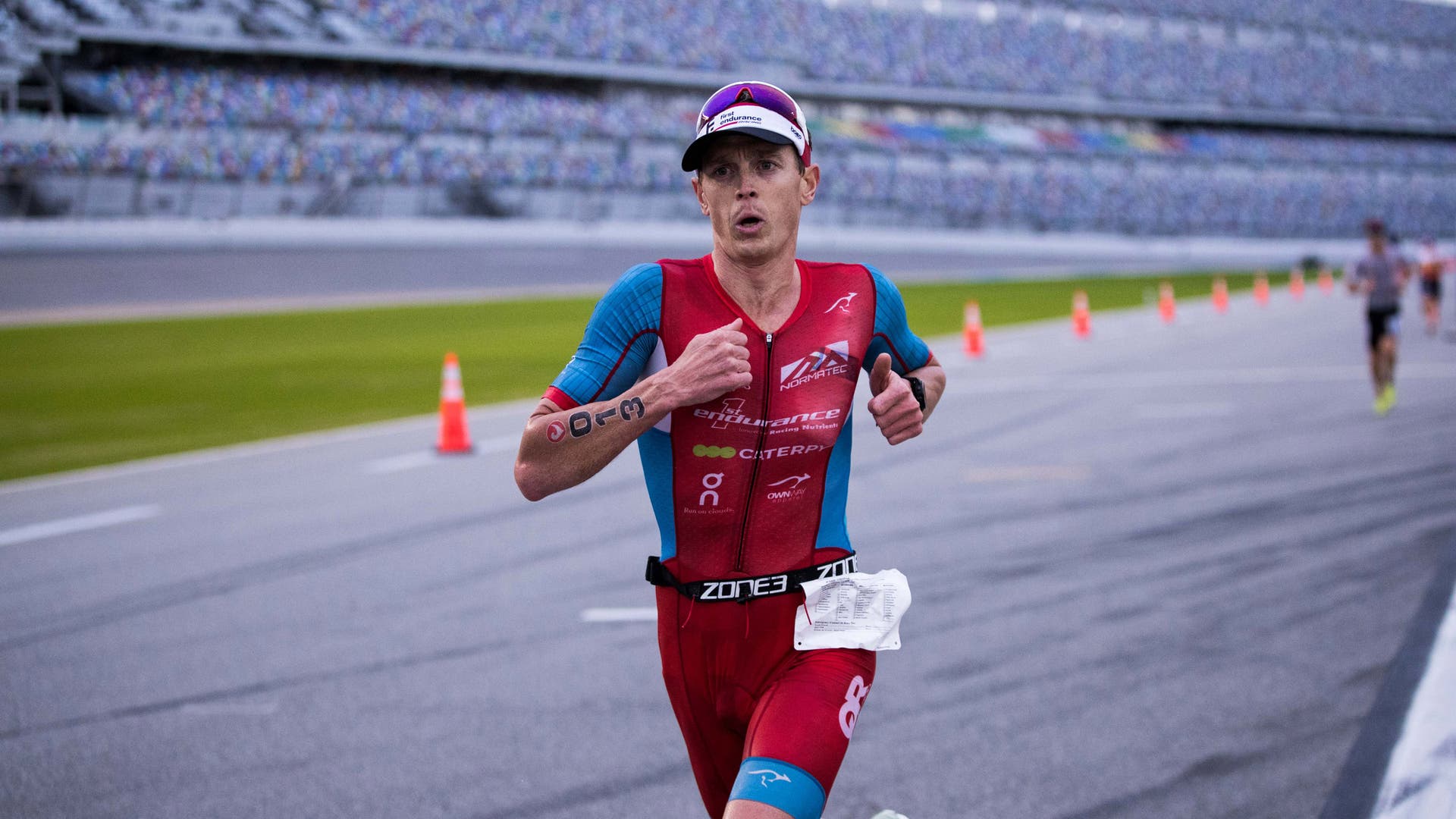
And while it’s tempting to push the pace on a pancake flat course, don’t do it, Vance warned. “The athletes who performed really well, like Iden and [second place finisher] Matt Hanson, came in pretty far down out of T2,” he said. “They didn’t get caught up and exert too much energy with the jostling out front.”
In fact, Hanson, of the U.S. ran up from 22nd place off the bike to second after conceding to losing some time towards the end of the bike to set himself up for a better run (his 57:21 split was the fastest in the field by nearly a minute). Beals held back as well. “I paced the ride conservatively since I anticipated that many athletes were likely to overcook the ride. I reminded myself to be patient and trust that I’d make up ground later in the race.”
Takeaway 5: Don’t forget to fuel
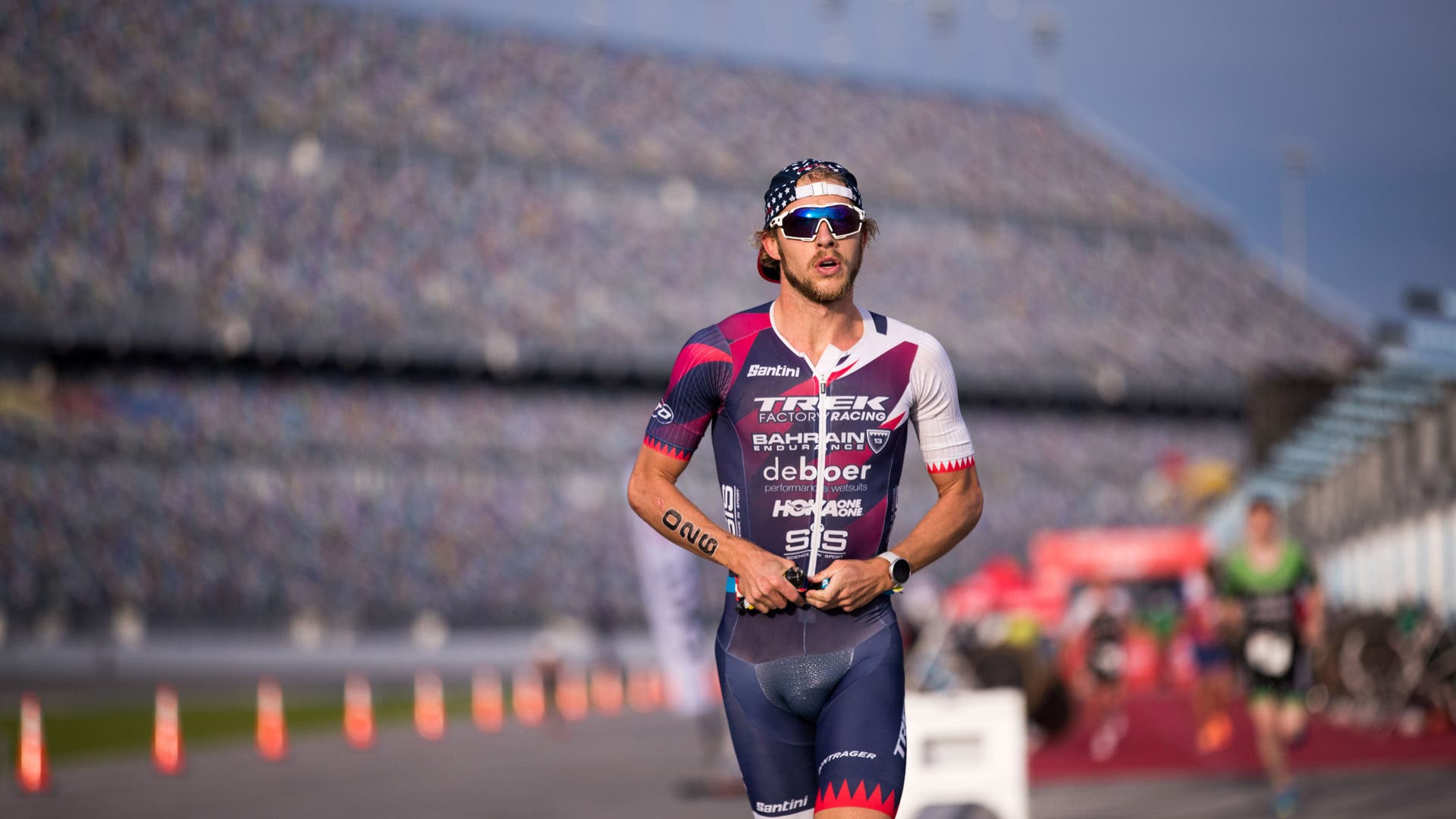
During a high-stakes, fast-paced race like we saw at the PTO Champs, staying on top of fueling is not always, well, top-of-mind, even for pros. Especially with so much prize money on the line, taking time to grab a water bottle or peel open a gel pack can feel like a waste of precious seconds. “It sounds silly to remind experienced athletes of the basics like hydration and fueling, but many do forget, especially when you feel so great on the bike,” said Dixon. On Sunday, fueling mistakes hampered breakout star Sam Long of the U.S., who finished 10th, later posting he made “nutritional errors on the run” that may have cost him a podium spot.
Even Kanute, a 2016 Olympian and runner-up at the 2017 Ironman 70.3 World Championships, had to be reminded to eat on Sunday, said his coach. “Ben’s dad was on the sidelines with a white board giving him time checks and a note to fuel,” said Vance. (Granted, Kanute, who finished 20th, went into the race distracted, as his wife had given birth to their first child, a girl, just two days before.) “With the effort levels he was sustaining, we know the race would be glycogen heavy and he needed to consume a lot of calories to avoid bonking. Having a set plan and a reminder never hurts.”
Takeaway 6: Know the (entire) course
While pre-race favorite Holly Lawrence wound up in fourth place and walked away with a $35,000 paycheck, the Brit admitted to making a few “silly errors,” including heading toward the finish line instead of towards T2 once off the bike, then having to turn around which cost her time. A lesson we can all learn from Lawrence’s misstep? Before the race, make sure to walk through all of your transitions, including the bike in, bike out, run in, and run out, and envision your entry and entrance. As Lawrence, a 16-time Ironman 70.3 champ showed, they can be tricky–no matter your experience.